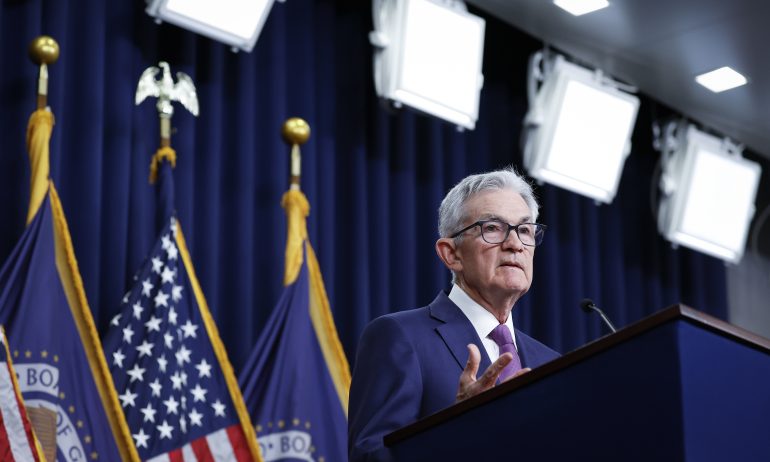When Will the Fed Cut Rates? More Data Needed, Powell Says

Many or all of the products featured here are from our partners who compensate us. This influences which products we write about and where and how the product appears on a page. However, this does not influence our evaluations. Our opinions are our own. Here is a list of our partners and here's how we make money.
In the first Federal Reserve meeting of the year, the central bank paused rates for the fourth time in a row Wednesday. More than half a year since the last rate hike, a hoped-for cut could be on the way — but don’t count on it just yet.
The federal funds rate has stood still at 5.25%-5.50% since the Fed last hiked it in July. At a news conference following the announcement, Fed Chair Jerome Powell said there would likely be rate cuts this year, but based on current data, he didn’t anticipate a rate cut at the Fed’s next meeting March 19- 20.
The stock market sank as hopes were dashed for a rate cut in March, but it began to recover as Powell softened some of the sentiment expressed in the Fed’s announcement.
“We have six months of good inflation data,” Powell said. “The question really is: that six months of good inflation data — is it sending us a true signal that we are in fact on a path — a sustainable path — down to 2% inflation? That's the question. And the answer will come from some more data.”
A decline in the federal funds rate would be a welcome change for consumers, who have seen interest rates spike for mortgages, credit cards and more since the Federal Reserve began hiking rates in March 2022 to combat rising inflation.
But we’ve come a long way in two years. Inflation has continued to slow, but not quite enough for the Fed, and that slowdown has been primarily in goods, not services. Wednesday’s announcement indicated that the Fed is still waiting to see a continued downward trend.
Last week’s Personal Consumption Expenditure (PCE) price index — the inflation proxy the Fed values most — showed core inflation, minus volatile food and energy prices, grew 2.9% over the last 12 months. By comparison, the PCE released by the Bureau of Economic Analysis in January 2023 showed core PCE grew 4.7% from the 12 prior months.
Based on current data Powell said the Fed doesn’t believe the U.S. has reached a soft landing, that is, inflation coming down sufficiently following financial tightening without sliding into a recession. “We're not declaring victory at this point. We think we have a ways to go,” said Powell.
But it’s unlikely the Fed would wait to get the inflation rate down to 2% — its target goal — before it begins making rate cuts.
Taking its cue from the Fed’s announcement, the futures market’s CME FedWatch Tool is mixed on the Fed’s next move in March. While the tool pegged odds at about even for a March rate cut before Wednesday, estimates were shifting to a more pessimistic outlook after Powell's remarks.
However, there are multiple federal data reports for the Fed to factor into its plans before it makes any decisions, including two more jobs reports and multiple additional inflation reports.
Photo by Anna Moneymaker/Getty News Images via Getty Images

on Capitalize's website

